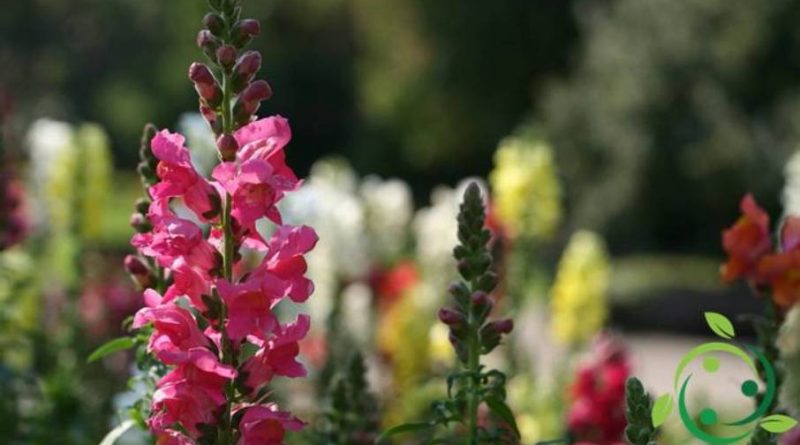How to grow the Lion’s mouth
How to grow the Lion’s mouth
The common snapdragon (Antirrhinum majus L., 1753 ) is a perennial herbaceous plant with showy colored flowers belonging to the Plantaginaceae family. Given its ornamental features in this sheet we see how to grow the Lion’s Mouth in a garden or in a pot. The name of the species is related to its flowers, partially tubular, with two lips, which open by pressing the flower on the sides (which resembles the mouth of a lion) that bloom on long spikes and with colors from yellow to red to pink or mottled . The snapdragon, if regularly cleaned of leaves and dried flowers can bloom from March until the first frosts to constitute hedges or very permanent flowering mixtures. On the snapdragon, many varieties and hybrids have been obtained so we can have the ornamental shades and characteristics that are desired. In general we can classify the Lion’s mouth in dwarfs (with height less than 30 cm), medium (from 30 to 70 cm) and tall (up to 120 cm).
For the cultivation of the snapdragon it must be considered that it is an average rustic plant, which can withstand temperatures up to -5 ° C. This is why it is perennial in the south and annual or biennial in the north (where it must be protected in winter). The important thing is that the mouth of the lion should be placed in full sun to have abundant blooms.
For water supplies these must be regular, but not too abundant, so it is good to irrigate in the morning hours only when the surface part of the soil starts to dry up. This obviously depends on the type of soil (it is preferable a light, calcareous and very organic soil) and well drained (which should be operated artificially if grown in pot with perlite at the bottom of the same and with a mixture of 80% of soil for plants flowers and 20% of coarse sand). Obviously winter irrigation is much less in the pots and almost useless in the garden.
The spread of the snapdragon takes place in spring starting from seed, in February March in heated seedling or in April May outdoors and final transplant in May. We recommend a distance between the specimens between 10 and 30 cm, according to the final size of the variety. The snapdragons, however, are spread with a certain facility for which automatic reproduction in the garden is possible from year to year. It is evident that almost certainly (due to hybridization) the color and size of these seedlings will be different from those of their progenitors.
The seeds are available and before buying it is better to choose the most suitable for color and characteristics to the objectives we have.
Among the adversities we remember above all the aphids in the spring period and fake diseases such as especially the rusts (to which the modern hybrids are more resistant) and the powdery mildew. If we want to fortify the plants and then treat them with a specific product we can treat the young plants with nettle macerate and then, at the first appearance or suspicion of attacks of aphids and / or fungal agents, treat with products based on horsetail. These are absolutely natural measures which increase the biological resistance of the plants.
The important thing to keep flowering for a long time, however, is to constantly dedicate the removal of the corollas and the withered leaves.

